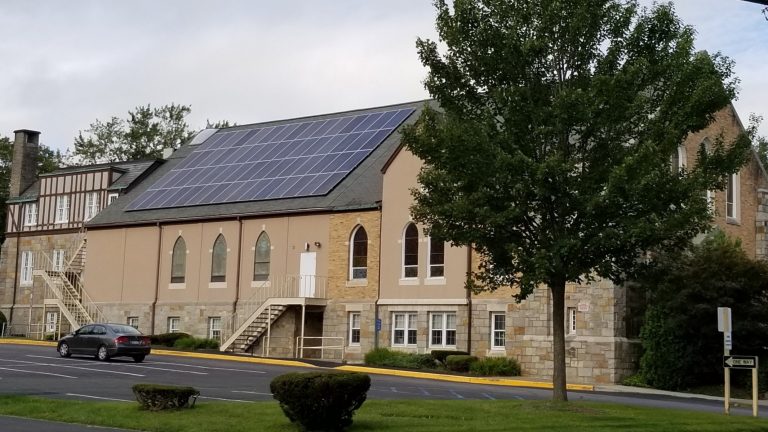The transition to renewable energy sources like solar panels is crucial for addressing climate change and reducing our carbon footprint.
However, this transition must be balanced with the need to preserve historic and older buildings, which are often integral to our cultural heritage and urban landscape.
Installing solar panels on these buildings presents unique challenges and requires thoughtful solutions to ensure both energy efficiency and architectural integrity.
Structural Integrity Assessment
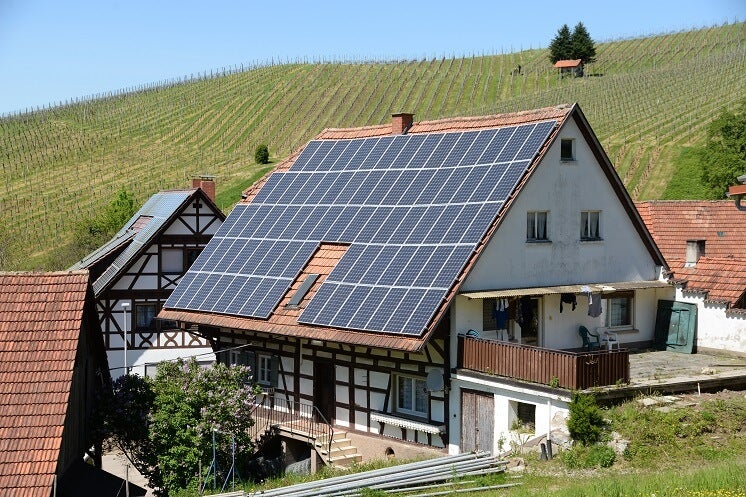
Older buildings often have structural limitations that can complicate the installation of solar panels. These buildings may not be designed to support the additional weight of solar panels and associated mounting equipment. This can lead to safety concerns and potential damage to the building.
Solutions
Conducting Thorough Structural Assessments: Before installation, a detailed structural assessment should be carried out to evaluate the building’s ability to support solar panels. This involves analyzing the roof’s load-bearing capacity and identifying any areas that may require reinforcement.
Utilizing Non-Penetrative Mounting Systems: To avoid compromising the structural integrity of historic buildings, non-penetrative mounting systems can be used.
These systems distribute the weight of the panels without the need for drilling into delicate structures, thereby preserving the building’s original materials.
Material Compatibility
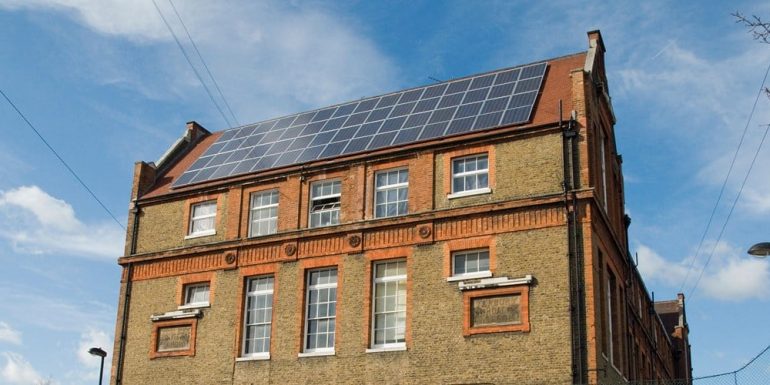
Historic buildings often incorporate materials that are not compatible with modern solar panel installations.
For instance, older roofs might be made of materials that are fragile or not suitable for mounting solar panels.
Solutions
Using Complementary Materials: When installing solar panels, it is essential to use materials that match or complement the existing architecture. This ensures that the installation does not disrupt the aesthetic or structural integrity of the building.
Specialized Mounting Systems: Employing specialized mounting systems designed for historic buildings can address compatibility issues. These systems are engineered to work with a variety of historic materials, ensuring a secure and sensitive installation.
Aesthetic Considerations
Solar panels can alter the visual appeal and historic character of older buildings, which can be a significant concern for preservationists and communities alike.
Solutions
Custom-Designed Panels: Solar panels can be custom-designed to blend with the architectural elements of historic buildings. This might include matching the color and texture of the panels to the roof or other building components.
Strategic Placement: Placing solar panels in less visible areas, such as the rear or inner parts of a roof, can minimize their impact on the building’s historic appearance.
Regulatory Compliance
Installing solar panels on historic buildings involves navigating a complex landscape of legal and regulatory requirements aimed at preserving the building’s historic status.
Solutions:
Engaging with Preservation Bodies: Early engagement with preservation bodies and obtaining the necessary permits are crucial steps. These organizations can provide guidance on acceptable modifications and help streamline the approval process.
Collaborating with Heritage Experts: Working with heritage experts ensures that the installation complies with preservation standards and regulations. Their expertise can help balance the need for renewable energy with the preservation of historical features.
Long-Term Maintenance
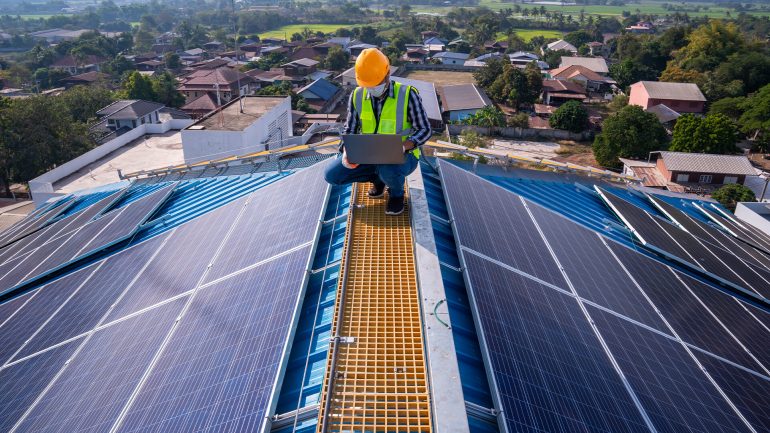
Maintaining solar installations on older buildings requires special consideration of the building’s age and design. Regular maintenance must not harm the building’s integrity.
Solutions
Developing Maintenance Schedules: Implementing regular maintenance schedules that account for the unique needs of historic buildings can prevent damage and ensure the longevity of both the solar panels and the building.
Training Staff: Training maintenance staff on the specific requirements of solar panels on historic structures ensures that maintenance activities do not inadvertently damage the building.
Visual Compatibility Analysis
Ensuring that solar panels do not compromise the visual and historic significance of buildings is a critical aspect of the installation process.
Solutions
Utilizing 3D Modeling and Simulations: Using advanced 3D modeling and simulations can help plan installations that are visually compatible with the building. These tools allow for precise planning and adjustment before any physical work begins.
Matching Colors and Textures: Matching the color and texture of solar panels to the building materials can make the panels less obtrusive and more harmonious with the building’s historic appearance.
Stakeholder Collaboration
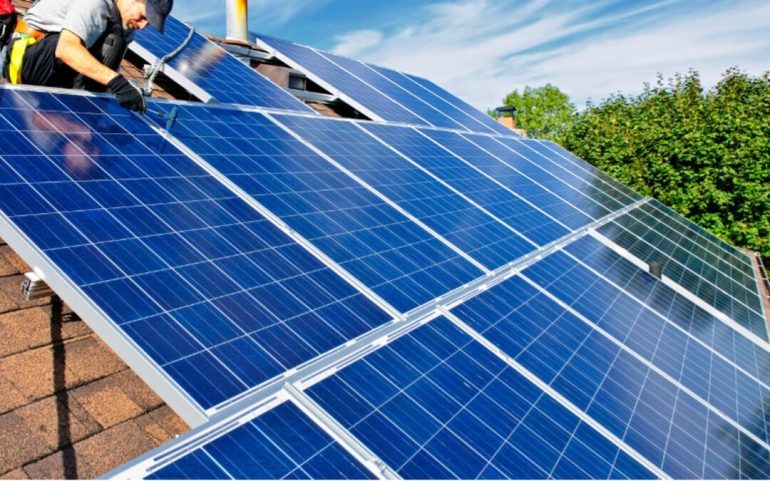
Gaining support from various stakeholders, including local authorities, preservationists, and the community, is essential for successful solar panel installations on older buildings.
Solutions
Initiating Dialogue: Initiating dialogue and collaborative planning sessions with all stakeholders ensures that their concerns and suggestions are considered. This collaborative approach can lead to more acceptable and sustainable solutions.
Educating the Community: Educating the community about the benefits of integrating solar technology can build support and understanding. Highlighting the environmental benefits and demonstrating respect for historical preservation can align stakeholders’ interests.

